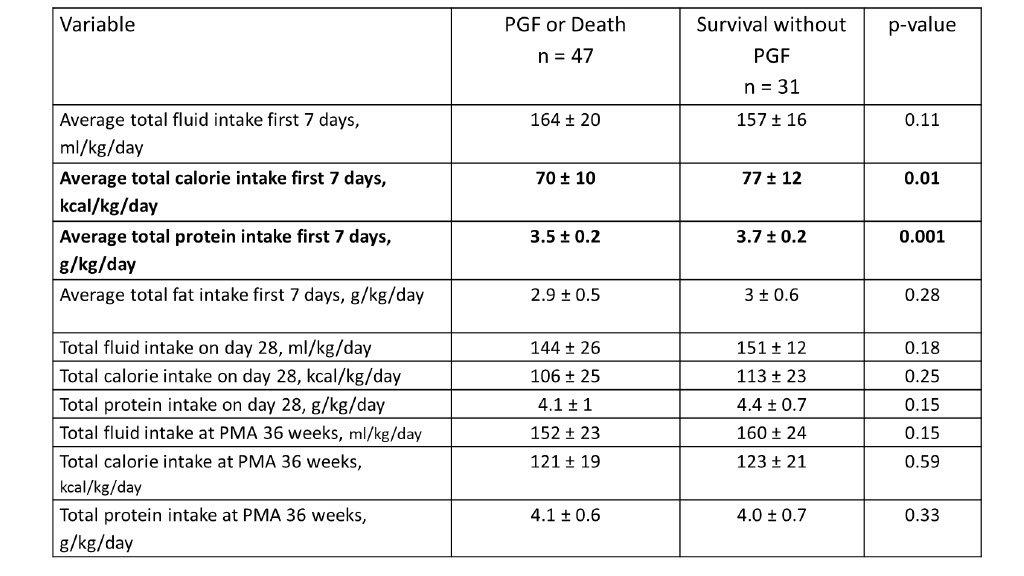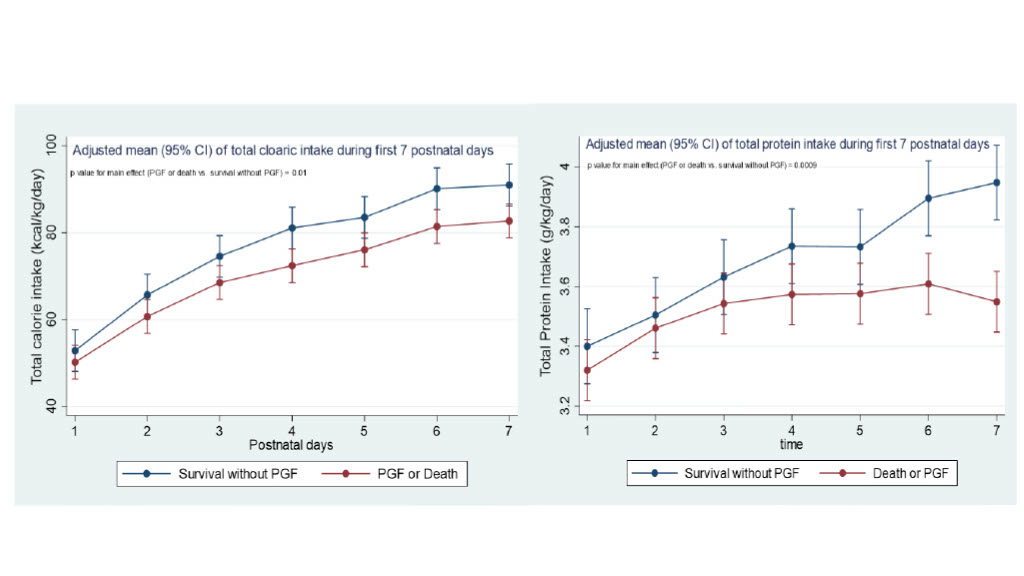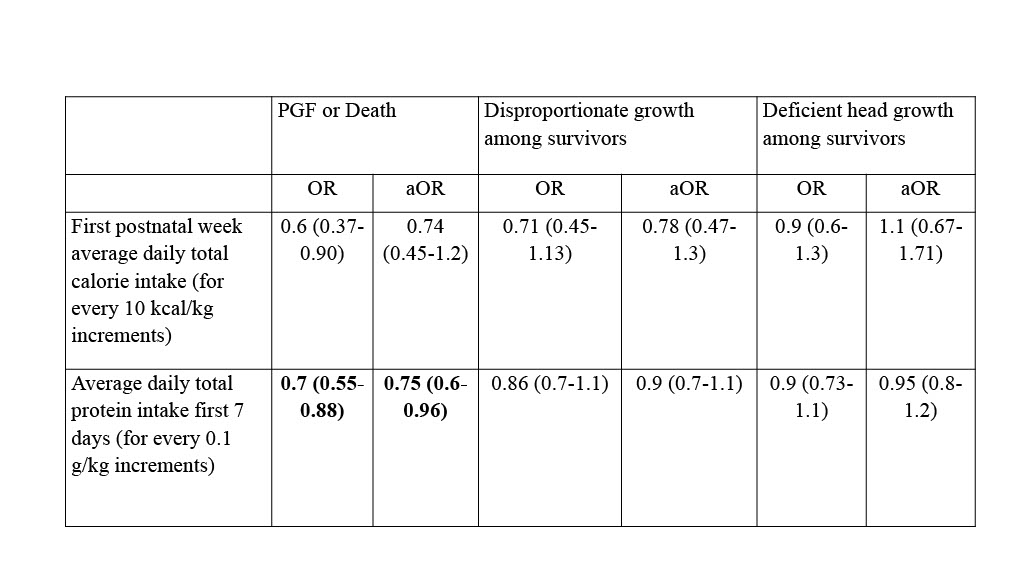Neonatal Fetal Nutrition & Metabolism
Neonatal Fetal Nutrition & Metabolism 2: Neonatal Nutrition, Growth, and Outcomes
322 - Early aggressive nutritional therapy to prevent postnatal growth failure and disproportionate growth in extremely preterm infants
Publication Number: 322.129
- RB
Ramachandra Bhat, MD (he/him/his)
Associate Professor
Louisiana State University School of Medicine in Shreveport
Shreveport, Louisiana, United States
Presenting Author(s)
Background: Extremely preterm infants are often at risk for early postnatal energy deprivation owing to sub-optimal parenteral nutritional support from restrictive fluid therapy and conservative enteral feeding regimens. Even very early energy and macro-nutrient deprivation may lead to altered body composition, postnatal growth failure (PGF), and disproportionate growth.
Objective: To evaluate the associations of average daily calorie and protein intakes during the first postnatal week with risks of PGF and disproportionate growth in extremely preterm infants.
Design/Methods:
This retrospective, single-center cohort study included extremely preterm infants (gestational age ≤28 weeks), born between December 2019 and September 2021. The infants with incomplete nutritional and anthropometric data and who died during the first postnatal week were excluded. The candidate predictor variables were the average daily total (enteral and parenteral) calorie and protein intakes during the first seven postnatal days. Outcome variables included (1) PGF: defined as gender-specific weigh-for-age or length-for-age < 10th percentile or Body Mass Index (BMI) >90th percentile at 36 weeks’ postmenstrual age (PMA), (2) disproportionate growth: defined as gender-specific length-for-age < 10th percentile (while weight-for-age ≥ 10th percentile) or BMI > 90th percentile at 36 weeks’ PMA. Multivariable logistic regression models were created to assess the independent associations of average daily total calorie and protein intakes during the first postnatal week and PGF and disproportionate growth after adjusting for illness severity using Clinical Risk Index for Babies (CRIB-II) scores.
Results:
Out of 78 infants included in the study, 45 (57%) infants developed PGF, 31 (40%) infants did not, and 2 (3%) infants died between day 8 and 36 weeks’ PMA. The average daily total calorie (kcal/kg/d) and protein (g/kg/d) intakes during the first postnatal week were lower among infants with PGF or death compared to infants who survived without PGF [mean ± SD: 70 ± 10 vs 77 ± 12, p=0.01 and 3.5 ± 0.2 vs 3.7 ± 0.2, p < 0.01, respectively] (Fig 1 and 2). After adjusting for CRIB-II scores, early postnatal higher protein intake was independently associated with a decreased risk of PGF or death [adjusted Odds Ratio (95% CI): 0.75 (0.6-0.96)] and a trend toward a lower risk of disproportionate growth among survivors [adjusted Odds Ratio (95% CI): 0.9 (0.7-1.1)] (Fig 3).
Conclusion(s): Early aggressive nutrition may be beneficial in mitigating the risk of postnatal growth failure and promoting proportionate growth.


